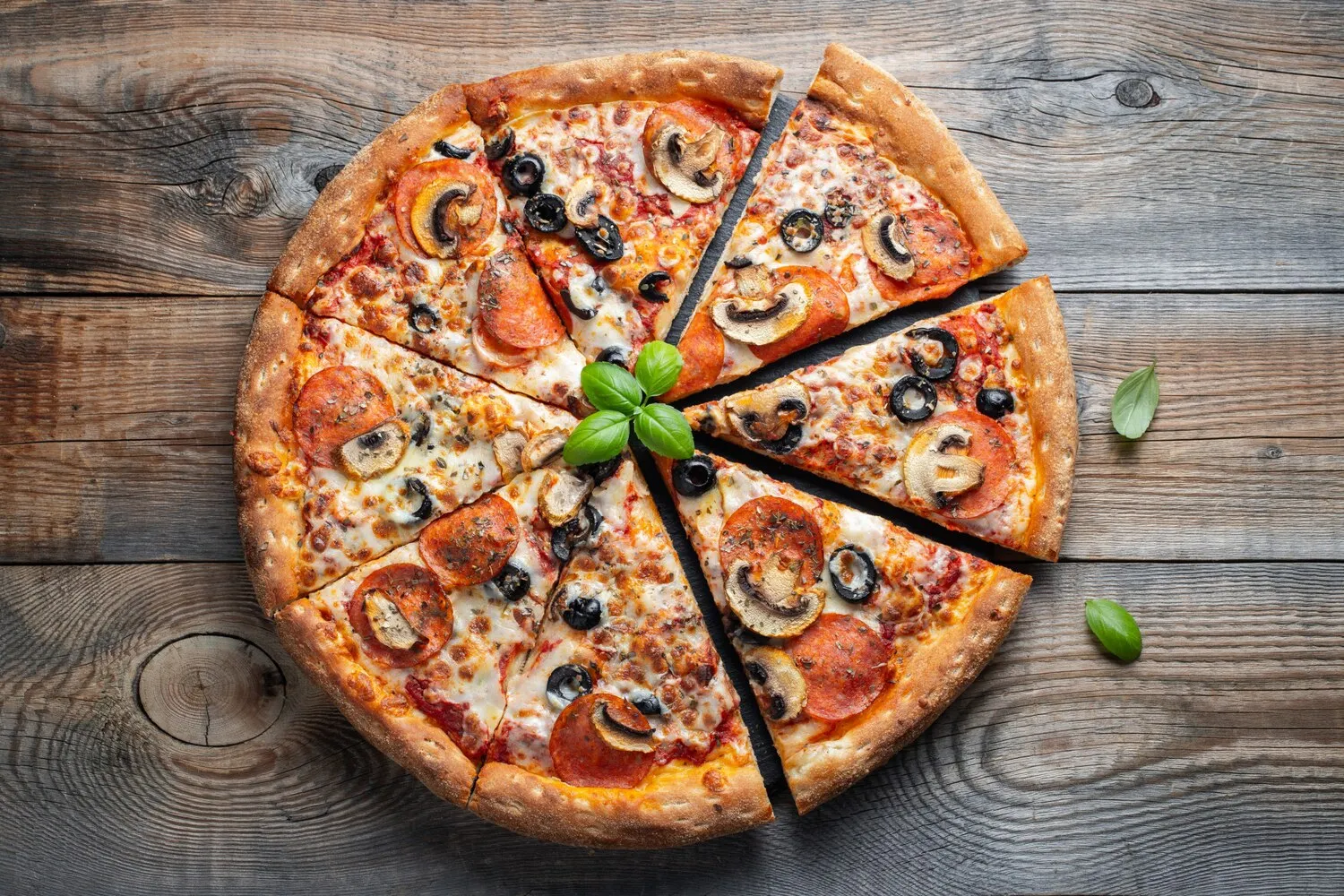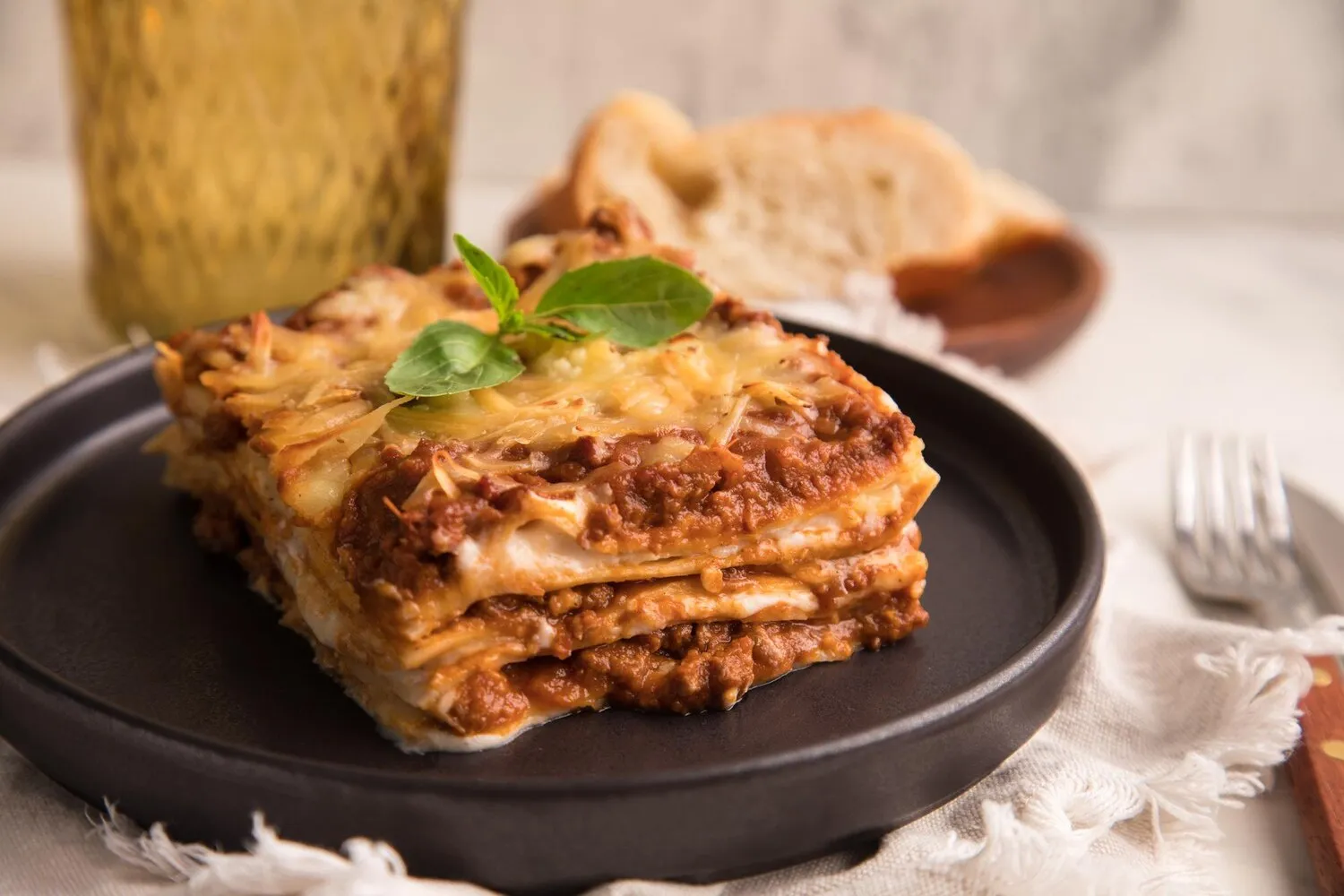
Pizza
Classic italian style pizza.
Nutrition Facts
* The % Daily Value (DV) tells you how much a nutrient in a serving of food contributes to a daily diet. 2,000 calories a day is used for general nutrition advice.
Restaurant Metropol traditional albanian and italian food
Pizza's roots can be traced back to ancient civilizations, with flatbreads topped with various ingredients being common in cultures around the Mediterranean. The modern pizza as we know it evolved in Naples, Italy, in the 18th or early 19th century, when tomatoes were added to flatbreads. It was initially a food for the poor, but its popularity grew, and it eventually became a national dish.
Pizza is deeply ingrained in Italian culture, representing family, community, and culinary tradition. It's not just a food; it's an experience, often enjoyed in a casual setting with friends and loved ones.
Family Gatherings
Pizza is a staple at family gatherings, providing a communal and shareable meal that encourages conversation and bonding.
Regional Variations
Different regions of Italy have their own unique pizza styles and toppings, reflecting local ingredients and culinary preferences. Examples include Roman-style pizza, Sicilian-style pizza, and Neapolitan-style pizza.
Pizzerias as Social Hubs
Pizzerias are often social hubs, where people gather to enjoy a meal, socialize, and celebrate special occasions.
Craft and Tradition
Pizza making is often seen as a craft, with pizzaiolos (pizza makers) taking pride in their skills and adhering to traditional techniques.
Classic Italian pizza is characterized by its simple, yet robust flavors. The key is using high-quality ingredients and allowing each element to shine. The flavors are a balance of savory, tangy, and slightly sweet.
The primary flavor components include: * **Dough:** Made from flour, water, yeast, and salt, the dough provides a slightly yeasty and chewy base. * **Tomato Sauce:** Typically made from San Marzano tomatoes, the sauce offers a bright, acidic, and slightly sweet flavor. * **Mozzarella Cheese:** Fresh mozzarella, especially mozzarella di bufala (buffalo mozzarella), adds a creamy, milky, and slightly tangy flavor. * **Basil:** Fresh basil leaves provide a fragrant, peppery, and slightly sweet herbal note. * **Olive Oil:** Extra virgin olive oil adds richness, fruitiness, and a subtle peppery kick.
Dough Hydration
A higher hydration dough (65-70% water) results in a lighter, airier crust with a better crumb structure. Experiment to find the hydration level that works best for you.
Proper Kneading
Thorough kneading develops gluten, which provides structure and chewiness to the dough. Knead by hand or use a stand mixer until the dough is smooth and elastic.
Long Fermentation
A long, slow fermentation (12-24 hours in the refrigerator) enhances flavor and digestibility. This allows the yeast to develop complex flavors and breaks down gluten, making the dough easier to digest.
High-Heat Cooking
Cooking pizza at high temperatures (450-500°F or higher) creates a crispy crust and a bubbly, slightly charred appearance. Use a pizza stone or steel to conduct heat efficiently.
Quality Ingredients
Using high-quality ingredients, such as San Marzano tomatoes, fresh mozzarella, and extra virgin olive oil, will significantly improve the flavor of your pizza.
Explore additional Italian dishes and restaurants
Explore ItalianDiscover top dining spots and culinary experiences in Bashkia e Tiranes.
Explore Bashkia e TiranesLearn more about the food culture, restaurant scene, and culinary heritage of Albania.
Explore Albania
